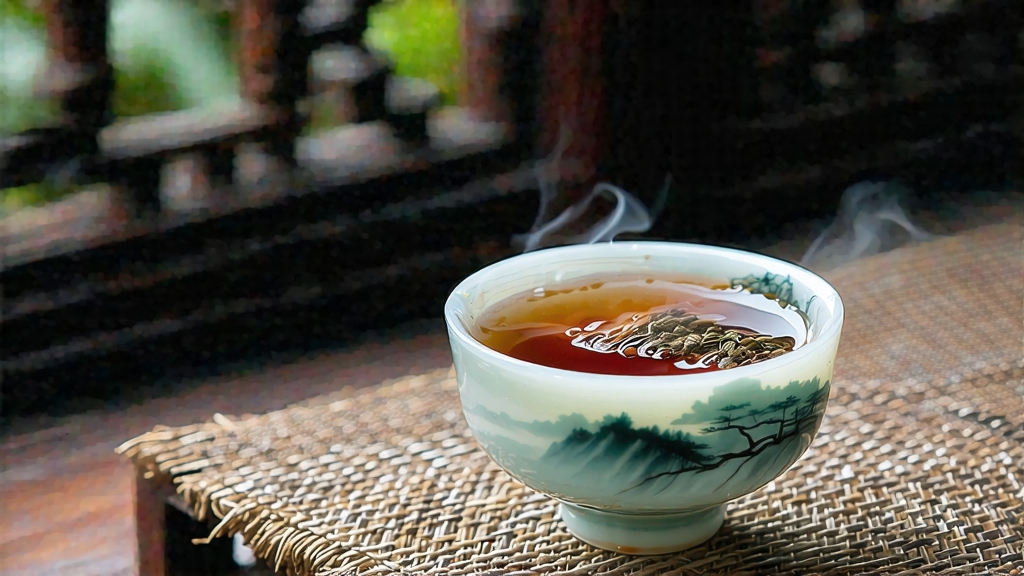
If every tea tells a story, Lapsang Souchong whispers legends of mist-wrapped cliffs, itinerant merchants, and the moment when China first gifted the world the taste of fully oxidized leaves. Discovered—some say by accident—during the late Ming dynasty in the Wuyi massif of northern Fujian, this “zhengshan xiaozhong” is universally acknowledged as the progenitor of all black teas. International traders later anglicized its name, yet the original two characters still carry precise meaning: zhengshan, “original mountain,” restricts authenticity to the 600–1,200 m microclimate within Tongmu Guan, and xiaozhong, “small cultivar,” signals the indigenous tea bushes whose diminutive leaves once produced an imperial tribute.
Today the appellation is fiercely protected; only 6,000 mu (about 1,000 acres) of national-park forest are legally entitled to the label “Zheng Shan.” Beyond that perimeter, similar leaf processed in neighboring villages must content itself with the lesser designation “wai Shan,” or “outside mountain.” Such geographic specificity matters because the gorge’s perpetual cloud cover, diurnal temperature swing, and mineral-rich lateritic soil imprint a natural sweetness that no amount of skill can replicate elsewhere.
Two distinct styles now travel the globe. Traditional Lapsang Souchong is the one that stunned London’s coffeehouses in 1667: leaves withered over smoldering pine embers, rolled, oxidized, then finished above resinous Masson pine logs. The smoke bonds to leaf surfaces, yielding a pungent bouquet reminiscent of campfire, pipe tobacco, and Christmas ham. Purists either adore or revile it; there is no middle ground. The second style, sometimes marketed as “unsmoked” or “new craft,” omits the final pine firing. Instead, master tea makers rely on precise withering, gentle bruising, and charcoal-basket baking to coax dried longan, honey, and cacao notes. Both versions share the same raw material—Xingcun Xiaozhong, Wuyi Caicha, or the newer clonal Wuyi #12—yet diverge dramatically in cup profile.
Harvest follows the Chinese solar calendar. The earliest plucking, ming qian (before Qingming), delivers the most tender one-bud-one-leaf, prized for its subtlety. Rainy season leaves, picked in late April, offer greater fragrance but less complexity. Finally, lixia material, harvested before summer solstice, provides the backbone for robust export blends. Regardless of season, the leaf must reach the factory within three hours; enzymatic oxidation waits for no horse caravan.
Withering begins on bamboo trays set inside the second floor of Tongmu’s wooden houses. Here, rising heat from the ground-floor hearth creates a convection oven that reduces moisture to 60 % within two hours. Workers turn the leaves every fifteen minutes, ensuring even dehydration while coaxing grassy volatiles to disperse. Once the leaf becomes supple enough to twist without tearing, it is rolled in antique cast-iron basins. The motion bruises cell walls, liberating catechins and polyphenol oxidase that will tint the liquor copper-red. Oxidation proceeds on rattan mats in a humid, 24 °C loft; color change is monitored every ten minutes. When the leaf edge turns maroon while the vein remains olive, the tea maker declares the critical moment and halts oxidation with a 220 °C, five-minute bake.
For traditional style, the final act is smoking. Fresh Masson pine is split, allowed to semi-dry until resin beads form, then stacked into a narrow trench. A slow fire creates cool smoke that rises through perforated bamboo trays holding the semi-dried tea. For eight hours the leaves absorb guaiacol and syringol, phenolic compounds responsible for the unmistakable pine aroma. Too hot and the leaf chars; too cool and the fragrance turns musty. Only experience—an ancestral clock kept in the blood—tells the master when to draw the tea.
Modern unsmoked lots skip the trench, entering instead a charcoal-heated bamboo basket. Temperature hovers at 80 °C for three hours, driving off residual moisture while caramelizing sugars. The result is a sleek, chocolate-brown strip that steeps into a bright claret infusion, its fragrance recalling dried